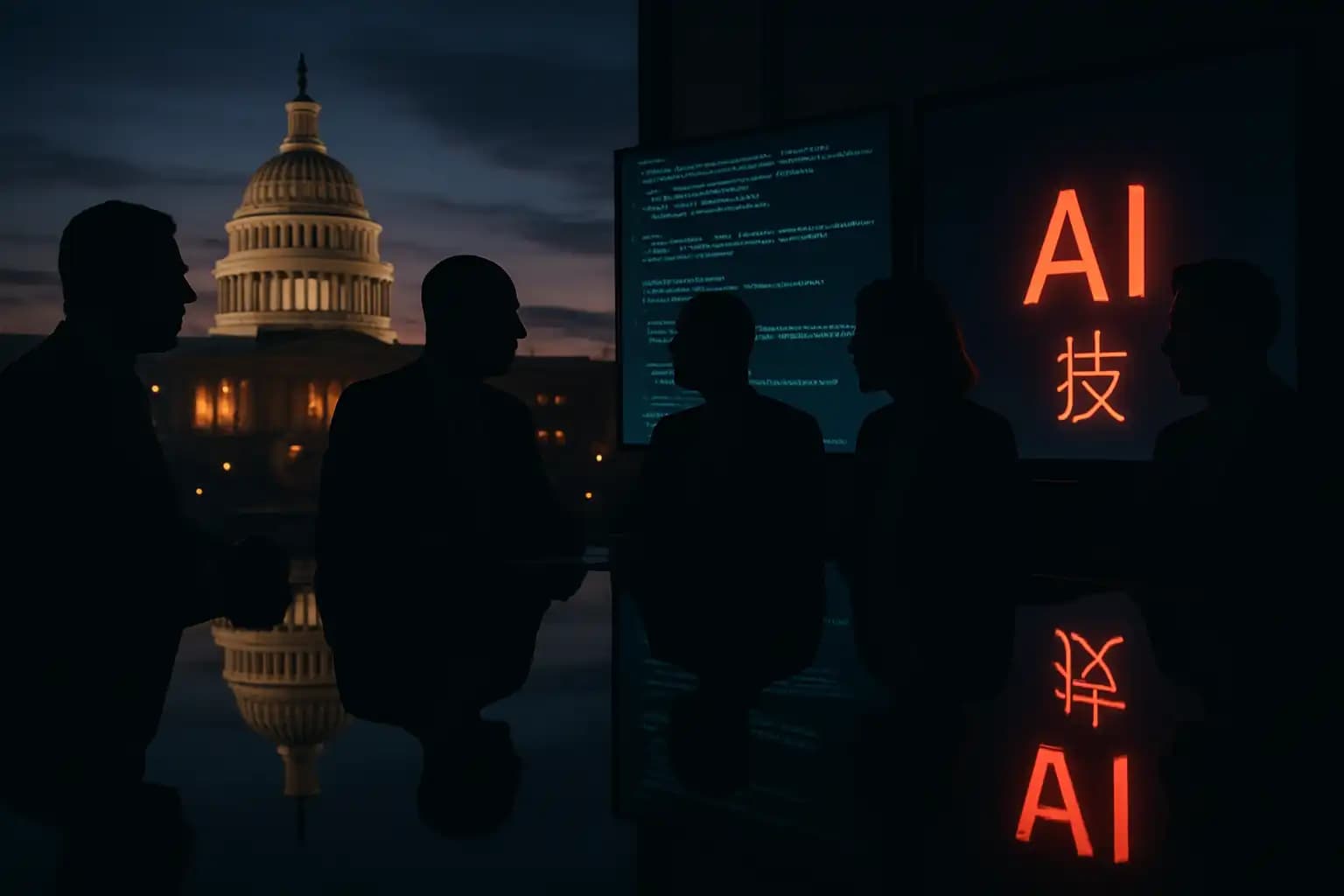America rushes into an AI arms race. Behind the war games and chip factories, a disturbing transformation unfolds: civil-military fusion. Investigative journalist Whitney Webb warns—echoed in recent reports—that as the U.S. government partners more closely with Big Tech and defense contractors, democracy risks being overwhelmed by the very techno-corporate structure it claims to oppose. Is this a strategic necessity or the quiet emergence of an American technocracy?
Whitney Webb’s Warning: AI, Surveillance, and the Chinese Model
Webb argues that to “out-China China,” the U.S. is adopting key aspects of Beijing’s civil-military fusion strategy. A May 2025 report from DeepNewz indicates this trend has intensified under new political leadership. U.S. tech firms like Anduril now intertwine with defense contracts and government-backed AI projects. Webb cites classified documents urging the National Security State to steer industry toward seamless integration, a policy long championed by China via its military-civil fusion doctrine. The National Security Commission on Artificial Intelligence has echoed these aims, even proposing data-sharing frameworks reminiscent of mass surveillance. This echoes transformations during past national security crises, prompting comparisons with earlier technological escalations.
Capital Without Borders: The Wall Street–China–AI Triangle
Behind the government-tech machine looms some of the world’s most powerful financiers. A 2022 investigation by BLiTZ reveals that BlackRock CEO Larry Fink and Blackstone’s Steve Schwarzman actively maintain strong ties to both Beijing and Washington. Schwarzman’s scholarship program at Tsinghua University and Fink’s awards from the US-China Relations Committee signal a desire to bridge both systems. Meanwhile, influential power-broker Henry Kissinger, a recurring guest of the CCP’s United Front Work Department, promotes cooperative technology exchange while consulting for U.S. firms. This entanglement shapes policy and investment as AI becomes a new “Cold War” frontline. Similar priorities appear in crucial defense, corporate, and tech partnerships, as demonstrated in this analysis of military innovation and Wall Street’s defense bets.
The Old Scandals Fueling New Networks: Chinagate and Ron Brown
Today’s elite power struggles resonate with past controversies that refuse to fade. As documented by StandardNewsWire, the Chinagate scandal of the 1990s focused on allegations that Chinese-linked donors used political fundraising to influence U.S. commerce policy—a network that included then-Secretary of Commerce Ron Brown. His 1996 plane crash further fueled speculation and congressional inquiry. Brown, who is remembered on the official record as the first African-American Secretary of Commerce, faced investigations over alleged trades of access for policy favors—a dynamic reflected in today’s Wall Street–China–DC connections. These scandals evoke unease over current transnational capital, highlighted in recent congressional discourse on government accountability and historical lessons on elite secrecy.
Civil-Military Fusion: The Xi Jinping Doctrine and Its U.S. Echo
Civil-military fusion (CMF) isn’t just an experimental policy. As outlined in this summary of the Chinese doctrine, it seeks to unify public and private sectors under one command for technological superiority. Under Xi Jinping’s rule, China’s Central Military-Civil Fusion Committee has weaponized private innovation for state interests—prompting U.S. officials to study and sometimes replicate this approach. Unlike China’s coercive methods, U.S. fusion unfolds through partnerships, subsidies, and interlocking directorates. Yet, the trend is clear: increased surveillance, centralized control, and, some argue, a diminishing of civilian life. As the scale of this shift becomes evident, themes of risk, control, and existential anxiety echo with urgency—ranging from modern survivalist psychology in this feature to state power analyzed in escalation analysis.
The civil-military fusion debate extends beyond who wins the AI race. It concerns who holds the code and, consequently, the future. For ongoing, evidence-based coverage of the shifting balance among technology, state, and capital, visit Unexplained.co—where the world’s next pivot involves not just technical change but philosophical considerations.




